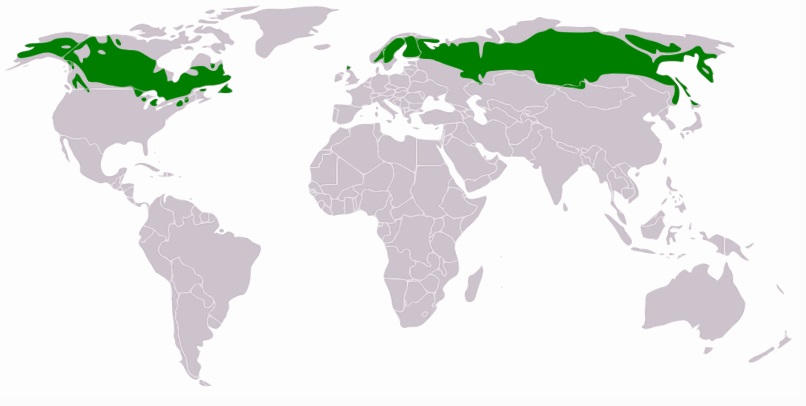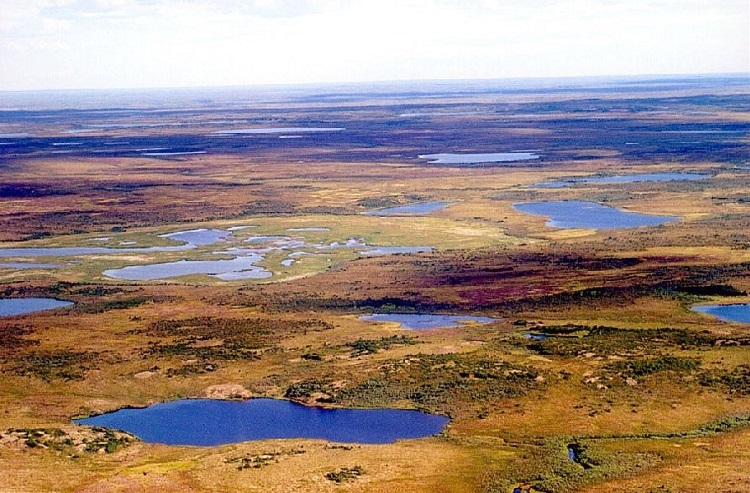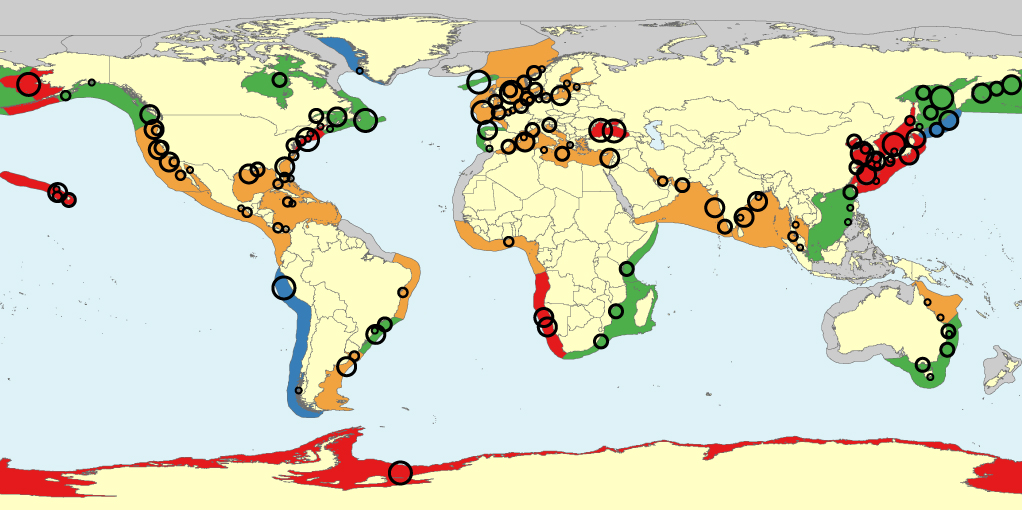Definition
An ecosystem or biome describes a single environment and every living (biotic) organism and non-living (abiotic) factor that is contained within it or characterizes it. An ecosystem embodies every aspect of a single habitat, including all interactions between its different elements.
Ecosystem Explained
The contents of an ecosystem can range from light and moisture levels to plant and animal life. The processes of a biome range from birth and reproduction to death and composition.
In an ecosystem, living organisms are grouped into producers, consumers, and decomposers, the former representing all plant life, consumers the organisms that eat them and each other, and the latter those scavengers and bacteria that break down dead organic matter. Together, these living components are known as biotic factors. Abiotic factors, or the non-living components of an ecosystem, can be climatic, social and edaphic (influenced by the soil or ground type). The calorific flow or energy flow that travels through an ecosystem’s food chain is initially provided through the input of the ecosystem itself – for example, the amount of sunlight available for plant life, and the nutrient levels of the soil. Without abiotic factors, no ecosystem can provide for biotic factors.
Ecosystems are constantly changing. Human threats to biodiversity include deforestation, pollution, transmission of disease across natural borders, introduction of non-indigenous species, and reduced natural habitats through overpopulation. More natural threats include the migration of a species into a particular region, a change in season, or a fatal disease which affects only one species.
Ecosystem Examples
Ecosystem examples are limitless. An ecosystem does not have to cover a large region. They exist in small ponds, inside human homes, and even in the human gut. Alternatively, ecosystems can cover huge areas of the planet.
One of the smallest ecosystems (in area, not in population) is that of the human gut. This ecosystem does not receive energy from sunlight, yet supports millions of living organisms. These are supplied with a food source in a moist, dark and warm environment – perfect conditions for these microorganisms. Our bodies contain thousands of ecosystems, all of them supporting huge colonies of healthy, but also pathogenic, single-celled organisms.
A small, shaded pond in a temperate region represents an aquatic ecosystem. Water-logged soil and excess shade affect plant life biodiversity, where only species suited to this environment will proliferate. The availability of producers affects which organisms thrive in and around the pond. Primary consumers (herbivores) must provide enough energy for secondary consumers, and so on. Should pesticides be added to the pond, or should the pond freeze over or become choked with thick layers of weed, the ecosystem of this pond must adjust.
On a much larger scale, but an artificial one, the Eden biome – a smaller representation of the global ecosystem – contains multiple ecosystems for research purposes, where separate domes have varying climates and light levels, and support different producers, consumers and decomposers. In an artificial biome many variables are tightly controlled. One does not usually place a herd of elephants in an artificial biome.

Types of Ecosystem
Ecosystem types abound; however, the most basic categorization involves three habitats: terrestrial, marine, and aquatic. Naturally, these groups can be split into thousands of smaller systems, each one offering a different mix of climate, habitat and life forms.
Terrestrial Ecosystems – Global Land-Based Habitats
At approximately 57 268 900 square miles, the terrestrial ecosystem covers just 29% of the globe. As these habitats are varied, terrestrial ecosystems are further broken down into six types.
The deciduous forest ecosystem is found in temperate regions and experiences temperature and precipitation fluctuations according to four seasons. Current conservation goals include reintroducing apex predators after the culling practices of previous centuries, and providing an environment full with mature trees to make up for unregulated deforestation.
Desert ecosystems can be hot and dry, semi-arid, coastal or cold. The feature that links these is a lack of water and the absence of a soil layer in which larger vegetation such as shrubs and trees can thrive. While indigenous life has adapted to the absence of water, a desert is still unable to support the populations of a wetter habitat. Substantially sized herbivores are unable to survive in a desert environment in large numbers, and this in turn limits the numbers of larger omnivores and carnivores.

Grasslands are also known as prairies, pampas, savanna or steppe. They can be tropical or temperate, and are a link between desert and forest. They rarely receive enough rain to support trees, but possess enough soil nutrients to feed large, grassy expanses. This provides considerable energy for primary consumers. With a large population of producers, a grassland ecosystem can similarly support large herds of herbivores, which in turn feed consumers higher up in the food chain hierarchy.
The taiga is a region of subarctic forest south of the Arctic Circle. It has layers of permafrost or rock under shallow soil, which make the soil marshy. The taiga supports huge numbers of conifers – slow growing, cold-resistant trees. Other plant life is small and includes lichen, marshland plants and small shrubs. The map below shows how this ecosystem is distributed across the globe.

Tropical rainforests are probably the most quoted ecosystems in the field of environmental conservation. Located around the Equator, constant rainfall and warmth together with a lack of seasons provide a stable climate, yet cloud and the tree canopy make the rainforest floor a dark place. Soil is leached of nutrients through constant precipitation. Plant life has adapted and is abundant, making the tropical rainforest ecosystem the terrestrial ecosystem with the most biodiversity.
Tundra, the last of the six terrestrial biomes, is the treeless environment of the Arctic Circle. Climate change is rapidly changing this ecosystem, as warmer weather brings non-indigenous predators in, where they compete for limited prey. Certain shrubs are taking root as the Artic permafrost layer melts. These compete with lichen – the primary food source of caribou.

Marine Ecosystems – Biodiversity in Oceans, Seas and Glaciers
Marine and aquatic ecosystems cover 139 668 500 square miles; 97% of this is salt water, making marine ecosystems the largest biome category.
Large marine ecosystems (LMEs) are particularly difficult to observe and control, as different salt water habitats have complex chemical compositions that vary from coast to coast and from shallow to deep. These compositions are forever shifting due to tides and currents. Pollutants and organisms travel on courses which, although predictable, are continuously in motion. The sheer volume of water a large marine ecosystem covers is immense. The map below shows the population trends of native and invasive species of jellyfish and their populations. This study looks at the trends of jellyfish behavior in an LME. To predict this trend on a global scale is possible, but the potential and actual variables are countless.

Marine or ocean ecosystems are grouped into open marine, ocean floor, coral reef, estuary, saltwater wetland estuary, and mangrove systems. These cover marine environments from the surfaces and floors of the deepest oceans to partially terrestrial, tidal swamps.
Aquatic Ecosystems – Freshwater Locations: Lakes, pools and rivers
Freshwater ecosystems cover approximately 3% of the planet’s surface. Aquatic ecosystems also include estuaries before freshwater meets salt, wetlands, ponds (natural or artificial), lakes, and rivers.
As fresh water is essential for all life, aquatic biomes are extremely important. Yet they are very small in comparison to other habitats, and have been used as dumping grounds for centuries. National Geographic reports that freshwater species are four to six times more at risk of becoming extinct than terrestrial or marine species. Freshwater biomes and coastal marine systems are also at high risk of eutrophication, a natural process which requires centuries to develop. Eutrophication is caused by increased levels of sediments which in turn increase levels of nutrients and encourage excessive plant growth. When vegetation dies off, after depleting the additional nutrients or becoming victims of their own success, their decomposition leads to dead zones, or hypoxic zones.
Microbiomes – Supporting the Biodiversity of Living Organisms
Any anatomical system contains microbiota – mutualistic, commensalistic, pathogenic or parasitic bacteria, fungi, archaea and viruses.
Health publications now report a relationship between gut biodiversity and the health of other anatomical and physiological systems, such as mood, hormonal production and resistance. This may be likened to the effect of reducing biodiversity in aquatic ecosystems, and the effect this will have on populations at distant locations. For example, research is looking into the prevalence of chronic inflammatory diseases as microbial diversity in the intestine decreases.
The microbiome may not be an ecological ecosystem, but it is a complete ecosystem of living and non-living components in a habitat where interactions take place, and which has its own climate.
Quiz
